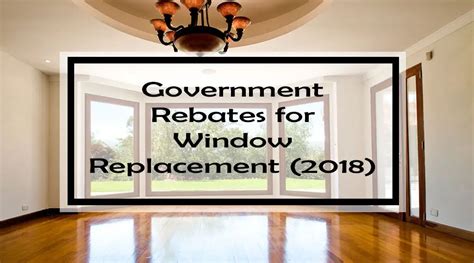Maximize Your Savings: A Comprehensive Guide to Rebates for New Windows
Upgrading your home’s windows can be a significant investment, but with the right strategies, you can minimize costs through various rebate programs and incentives. This guide will provide you with the necessary information to maximize your savings when replacing old windows.
Understanding Window Rebates
Rebates for new windows often aim to encourage homeowners to invest in energy-efficient solutions. Many government programs, local utilities, and manufacturers offer rebates to offset the costs of new windows. These rebates can come in the form of direct cash back or tax incentives.
Types of Rebates Available
1. Government Incentives
Federal, state, and local governments often provide financial incentives for homeowners to install energy-efficient windows. The Energy Star program, for instance, allows homeowners to claim a tax credit for certain qualifying windows that meet energy efficiency standards.
2. Utility Company Rebates
Many utility companies have rebate programs as part of their efforts to reduce energy consumption. These rebates can vary based on the energy efficiency of the windows you choose. It’s wise to check with your local utility provider for details about current offers.
3. Manufacturer Rebates
Window manufacturers may also offer their own rebates or promotional discounts on specific window lines. These deals can further help lower the upfront cost of your new windows.
How to Qualify for Rebates
To take advantage of available rebates, ensure your new windows meet certain energy efficiency ratings. Windows that have the NFRC (National Fenestration Rating Council) label typically qualify for these programs. Look for features such as low U-factors, low solar heat gain coefficients, and gas-filled spaces, which improve insulation and energy savings.
Steps to Maximize Your Rebates
1. Research Available Rebates
Before purchasing new windows, research all available rebate programs in your area. Websites like Energy.gov provide comprehensive resources to identify federal and state incentives.
2. Choose Energy-Efficient Models
Opt for windows that are rated highly for energy efficiency. Look for those carrying the Energy Star label as they are often eligible for the maximum rebates.
3. Keep Documentation
When purchasing new windows, keep all relevant documentation, such as receipts and installation contracts. Many programs require this information to process rebates.
4. Consult with Professionals
Work with contractors who are familiar with local rebate programs. They can guide you on the best energy-efficient products and help ensure that your installation meets all necessary criteria for rebate eligibility.
Common Misconceptions About Rebates
1. Rebates Are Only for Energy-Efficient Windows
While many rebates focus on energy efficiency, there are also local initiatives that support general window replacements, especially in older homes. Be sure to explore all your options.
2. Rebates Are Difficult to Claim
Although it may seem complex, many rebate programs have streamlined their processes for ease of use. Often, you can submit claims online and have your rebates processed quickly.
Conclusion
Maximizing your savings through rebates for new windows is not only beneficial for your wallet but also for the environment. By researching available programs, investing in energy-efficient models, and keeping thorough records, you can benefit significantly from these incentives. Don’t forget to consult professionals who can further guide you through the process and help you make informed decisions that support your energy-saving goals.
FAQs
1. What types of windows qualify for rebates?
Typically, windows that meet specific energy efficiency standards and carry the Energy Star label are eligible for rebates. Always check local guidelines.
2. How do I know which rebates I qualify for?
Research state and federal programs, utility company websites, and manufacturer offers to determine your eligibility for various rebates.
3. Can I combine multiple rebates?
Yes, in some cases you can combine rebates from different sources, such as utility company offers and federal tax credits. Always confirm with individual programs.
4. How long does it take to receive a rebate?
The timeframe for receiving a rebate varies. Some utility rebates can be processed within weeks, while tax credits take longer, depending on tax filing dates.
5. Are there any upfront costs for applying for rebates?
Generally, there are no upfront costs specifically for applying for rebates, but you will need to purchase the qualifying windows first.
Download Rebates For New Windows
